Cure Catheter®
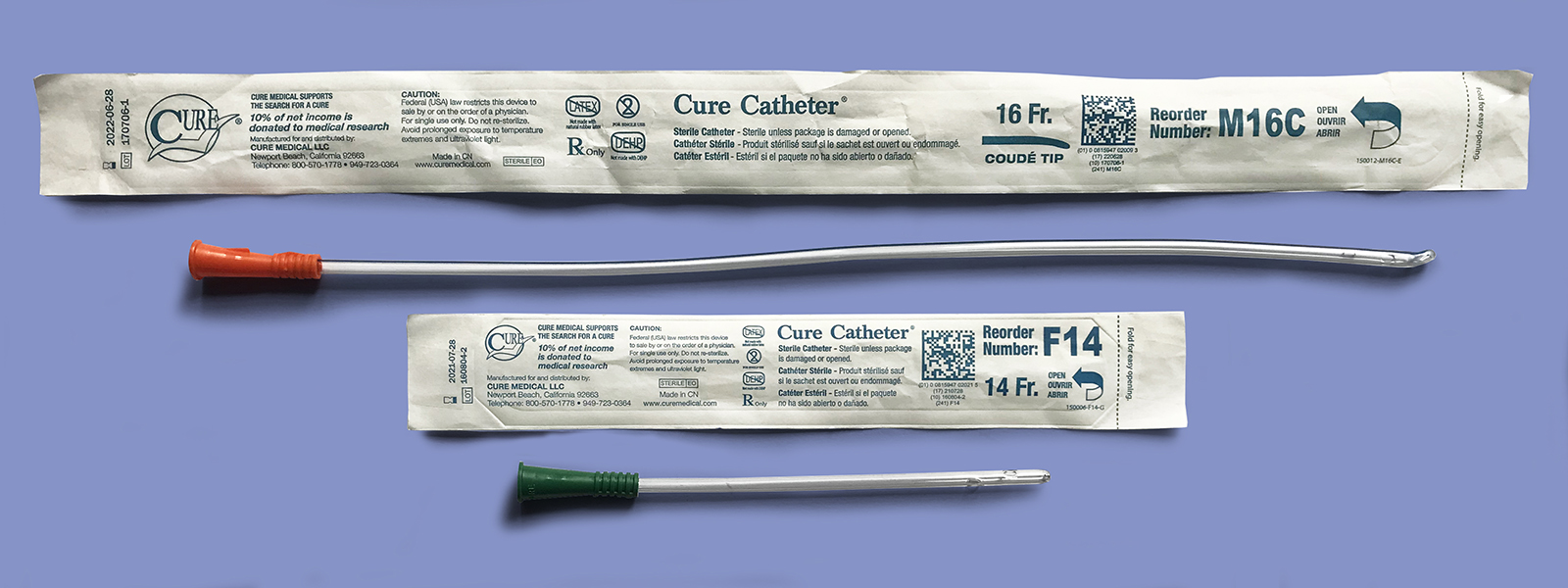
Product Overview
Available Lengths: 16 inches (Male); 10 inches (Pediatric); 6 inches (Female)
Available French Sizes: 8, 10, 12, 14, 16 (Male & Female only), 18 (Male & Female only)
Available Tips: Coudé (Taper Tip) and Standard
Pros
Smoothed eyelets decrease the odds of urethral trauma during insertion.
Thoughtful packaging design makes it easier to lubricate and insert the catheter.
Our Verdict
We really wish that Cure Medical had decided not to use PVC at all in the construction of this urinary catheter. There’s a lot of attention to detail here, from smoothed eyelets to thoughtful packaging. 10% of net income is donated to medical research.
Cons
Published literature suggests that there are a few issues with PVC as a material – see more in the materials section.
An extremely flexible catheter can be hard to insert.
Material
The Cure Catheter® is an uncoated catheter that’s made out of Polyvinyl Chloride AKA PVC. Cure Medical has a very prominently stated commitment on its website to not make catheter with DEHP/DINP (both PVC plasticizers that have been shown to cause reproductive harm), BPA, or Natural Rubber Latex.
Flexibility
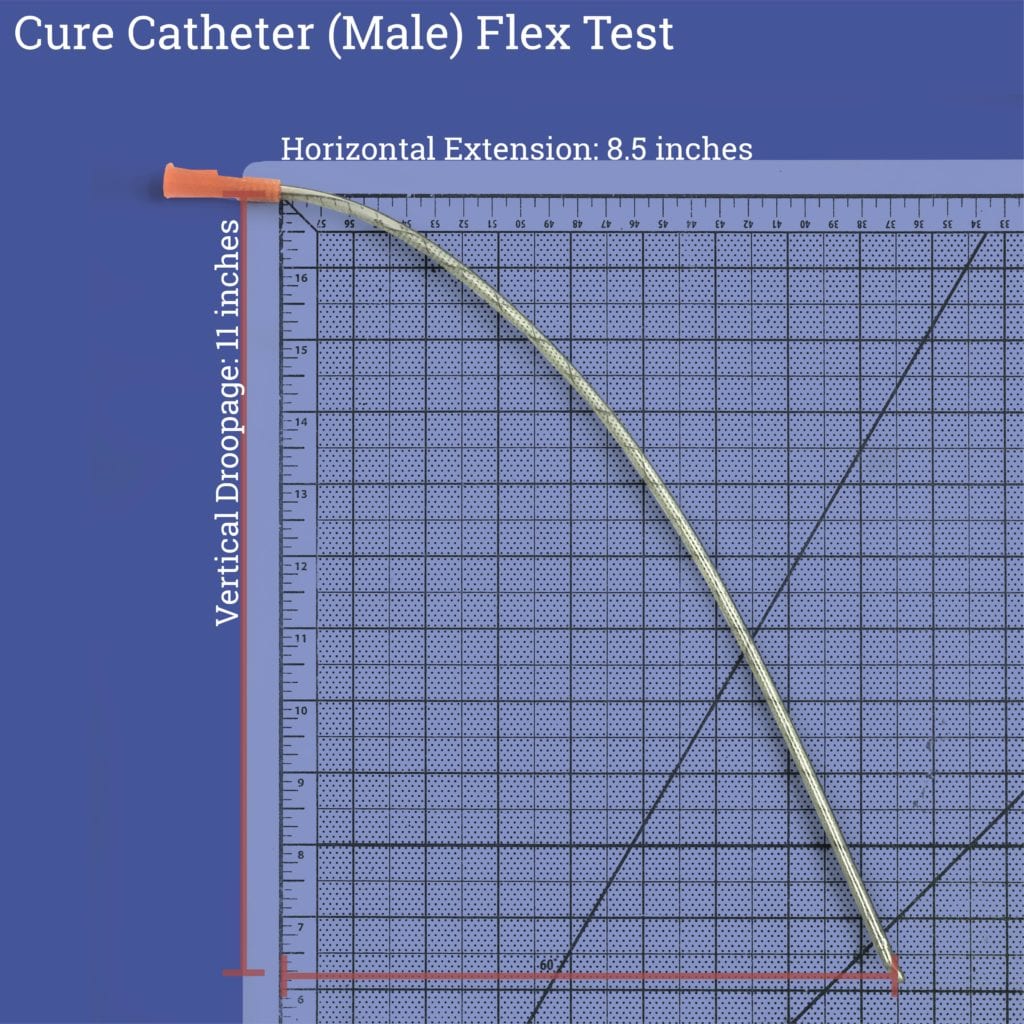
The Cure Catheter® is quite flexible – a 16 French male coudé catheter droops down 11 inches, while extending out 8.5 inches horizontally. It’s not the most flexible catheter that we’ve reviewed to date, but it’s up there. The female Cure Catheter® droops down 1 inches, while extending out 5.25 inches, which is pretty flexible for a short female catheter.
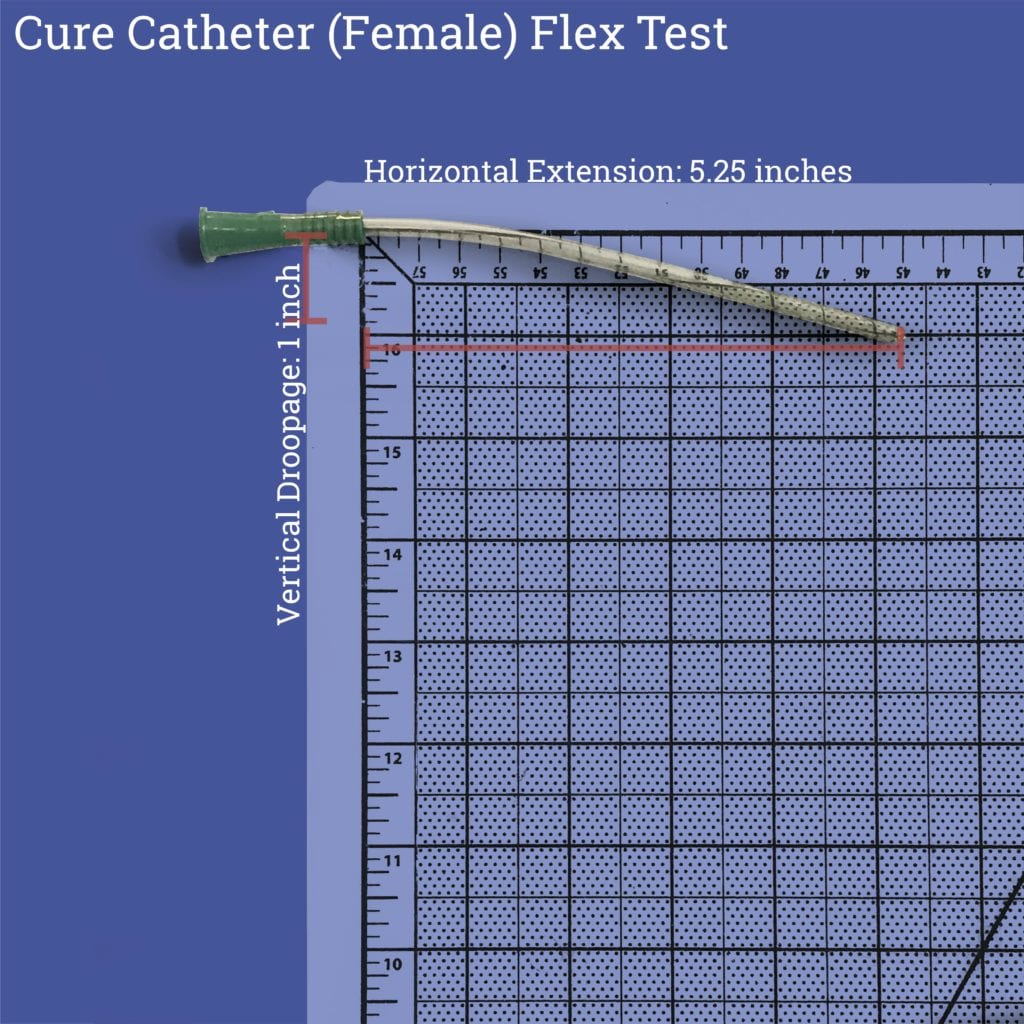
Catheter flexibility is a double-edged sword – the stiffer the catheter, the easier it is to insert, but it’s also easier to accidentally create a false passage in your urethra (the study in question focuses on indwelling catheters, but the logic should hold for intermittent catheters). On the other hand, the more flexible the catheter, the harder it is to hurt yourself while inserting it, but it’s also harder to lubricate the catheter or get it all the way to your bladder without touching every inch of it.
Packaging
While the Cure Catheter® can definitely be considered a budget catheter, they’ve incorporated a pretty thoughtful consideration into their packaging. Unlike most other catheter brands whose catheter packages open from the funnel end of the catheter, this packaging can be opened from both sides. This makes it easier to apply lubricant and insert the catheter without touching it directly.
Lubrication
For uncoated catheters like this one, people usually take a single-use lubricant sachet, rip it open on both ends, and pass the sachet over the catheter. Since the Cure Catheter® is so incredibly flexible, it’s extremely difficult to get the catheter into the lubricant sachet, but here’s where Cure‘s packaging makes a difference! Opening the packaging from the tip end makes it a bit easier to control where the catheter tip is and to slide it into the sachet without it contacting anything else.
Insertion
Cure gets points here for designing its catheter to be safer to insert without the risk of urethral trauma.
The Cure Catheter®’s eyelets are polished and smoothed, unlike most competitor catheter eyelets which are typically stamped out of the catheter with a die during manufacturing, leaving sharp edges on the catheter. This means that the Cure Catheter® should be more comfortable to insert, and has less of a chance of scratching up the inside of your urethra and causing urethral trauma. Too much trauma and scar tissue can build up, creating urethral strictures which can obstruct the flow of urine.
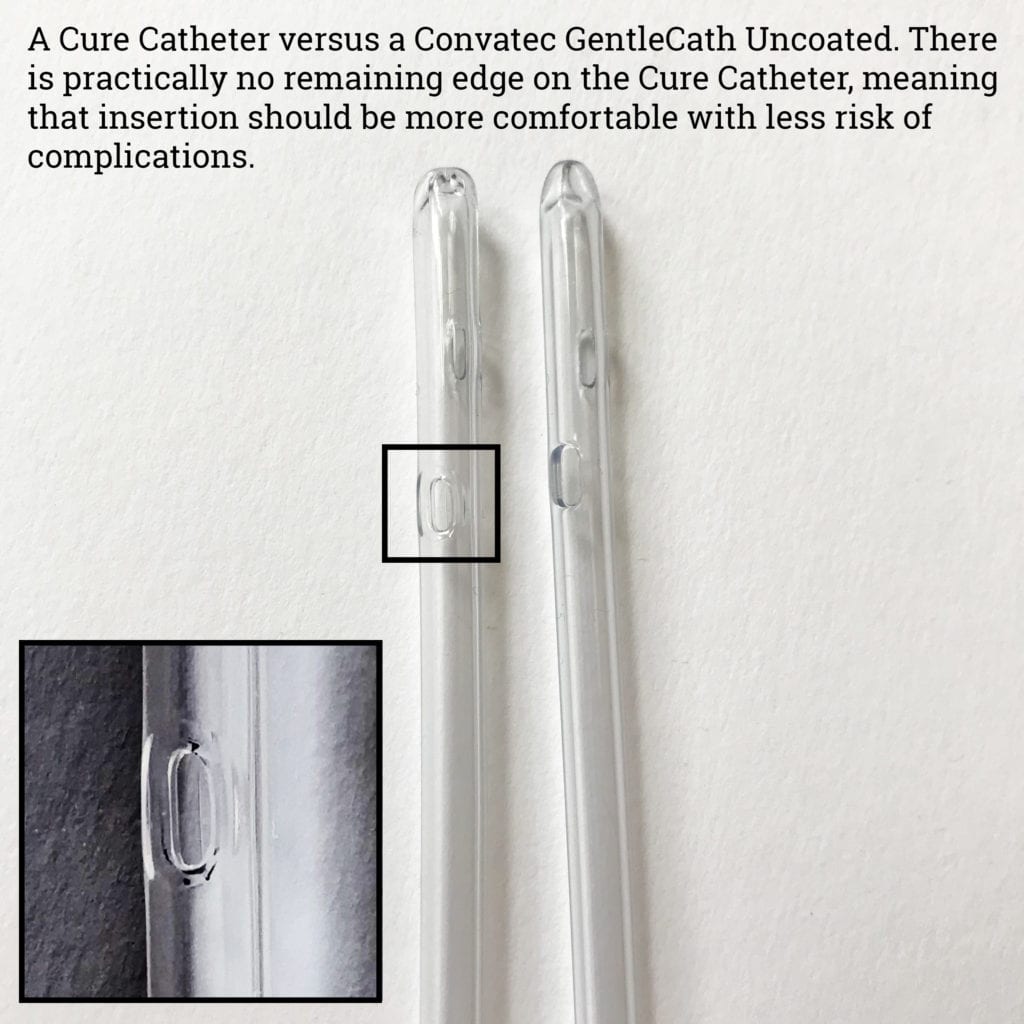
We’ve already talked at length about how the packaging design might translate into a better experience while catheterizing – this is especially true for men who have a longer catheter to contend with. You can open the package bit-by-bit, sliding the lubricant sachet further down the shaft of the catheter, using both the sachet and the packaging to grip the catheter without touching it directly and advance it into your body. When you’re ready to peel back more of the packaging, tighten your grip on the shaft of your penis so the catheter doesn’t slip back out, and use your inserting hand to open more of the packaging and slide the lubricant sachet further down
Adverse Events
We took a look at product complaints for Cure Catheters from 2019, and found 31 different complaints in the FDA database (some reported adverse events contained several complaints, so those were all counted separately). While the screenshot below shows 43 complaints, many of those are for different versions of the Cure Catheter, and will be discussed in future reviews.
21 of these complaints had to do with UTIs and users admitted to using non-sterile processes.
6 had to do with the catheters scraping the urethra, sometimes due to the users not lubricating their catheters or using water as a lubricant, but a few reported the eyelets felt sharp despite Cure’s work to reduce trauma through eyelet design.
1 individual reported an allergic reaction to the catheter material.
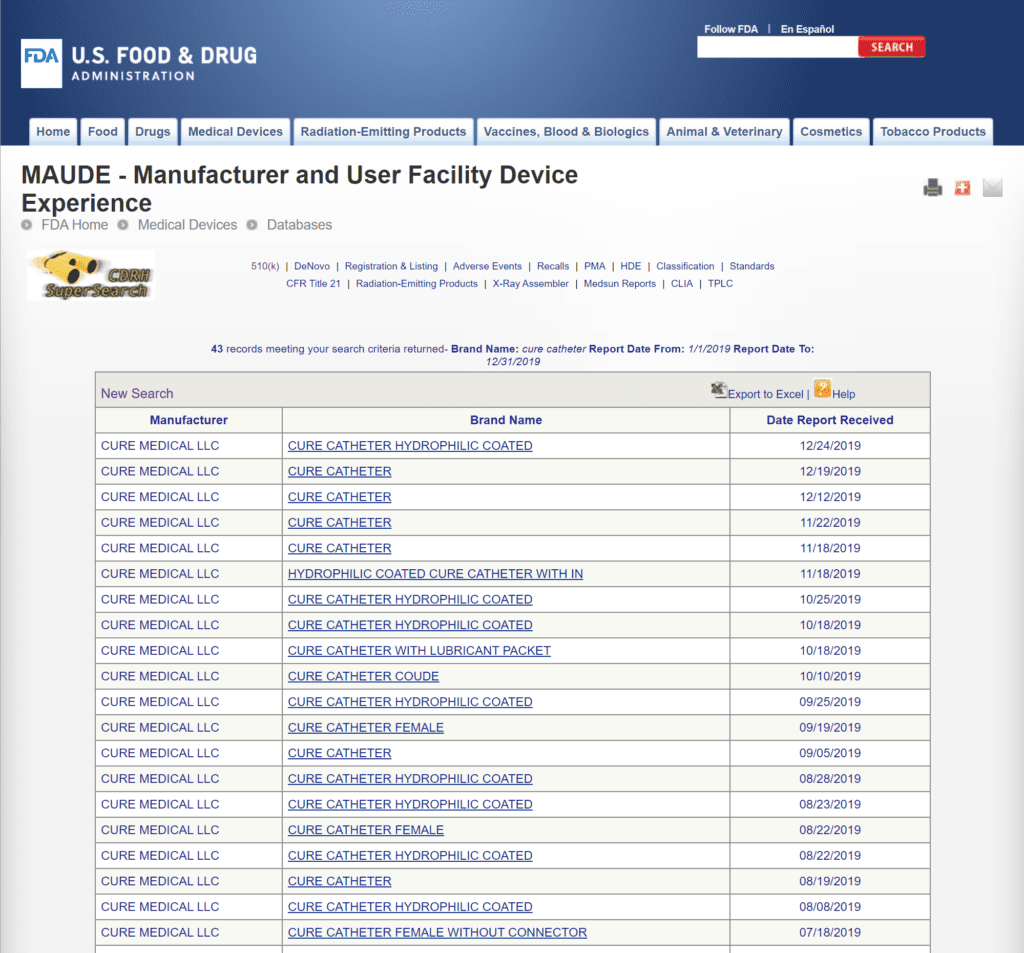
The review of FDA Medical Device Reports from 2019 provides a limited snapshot of recent product performance in the marketplace.